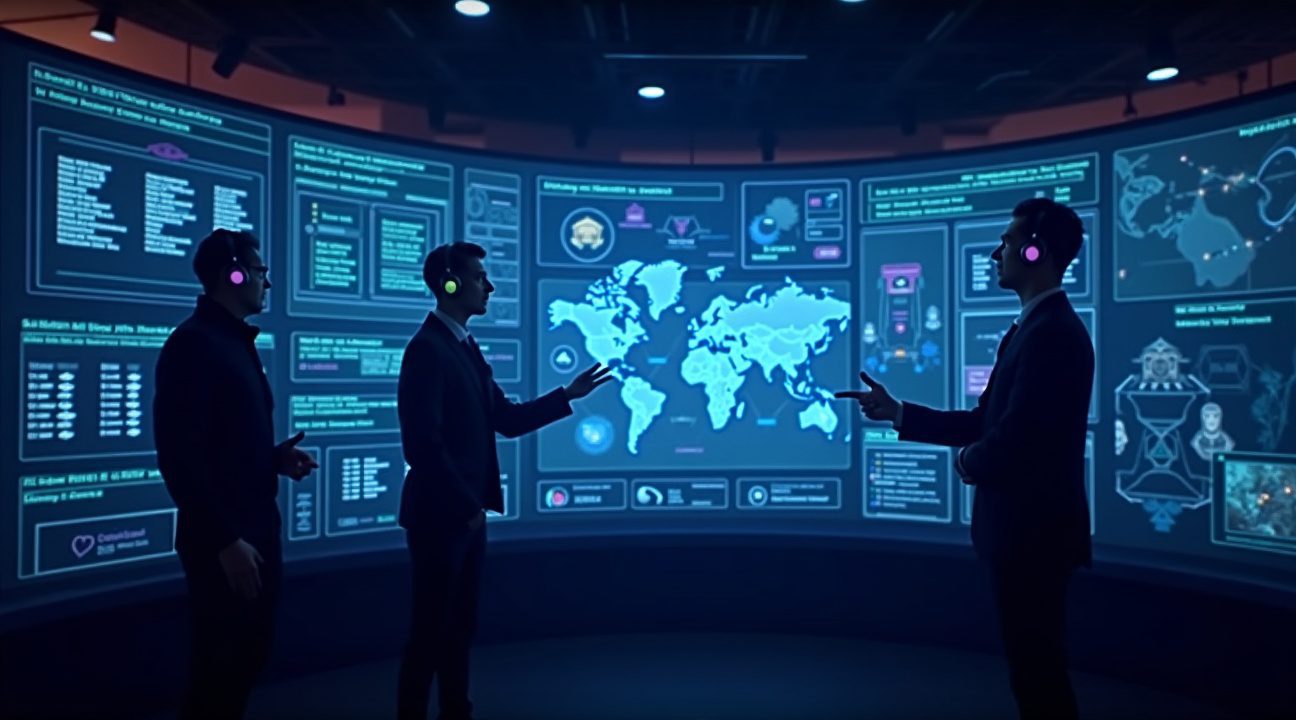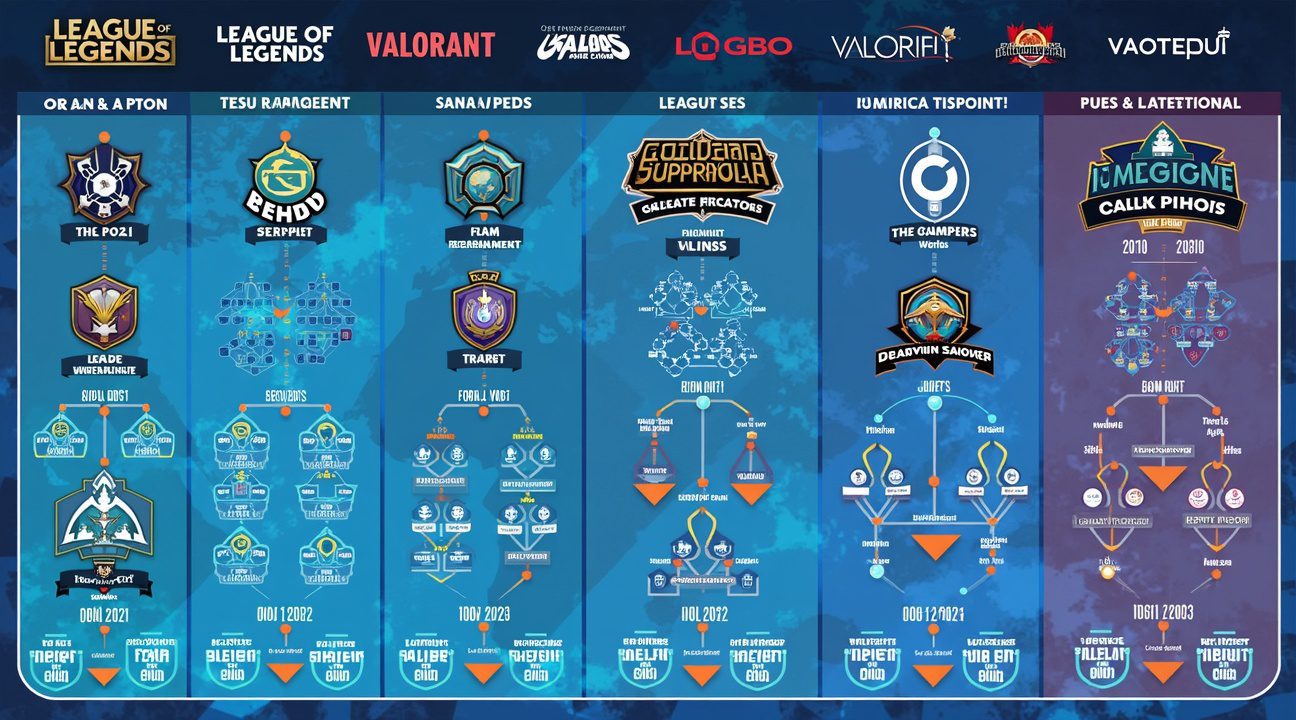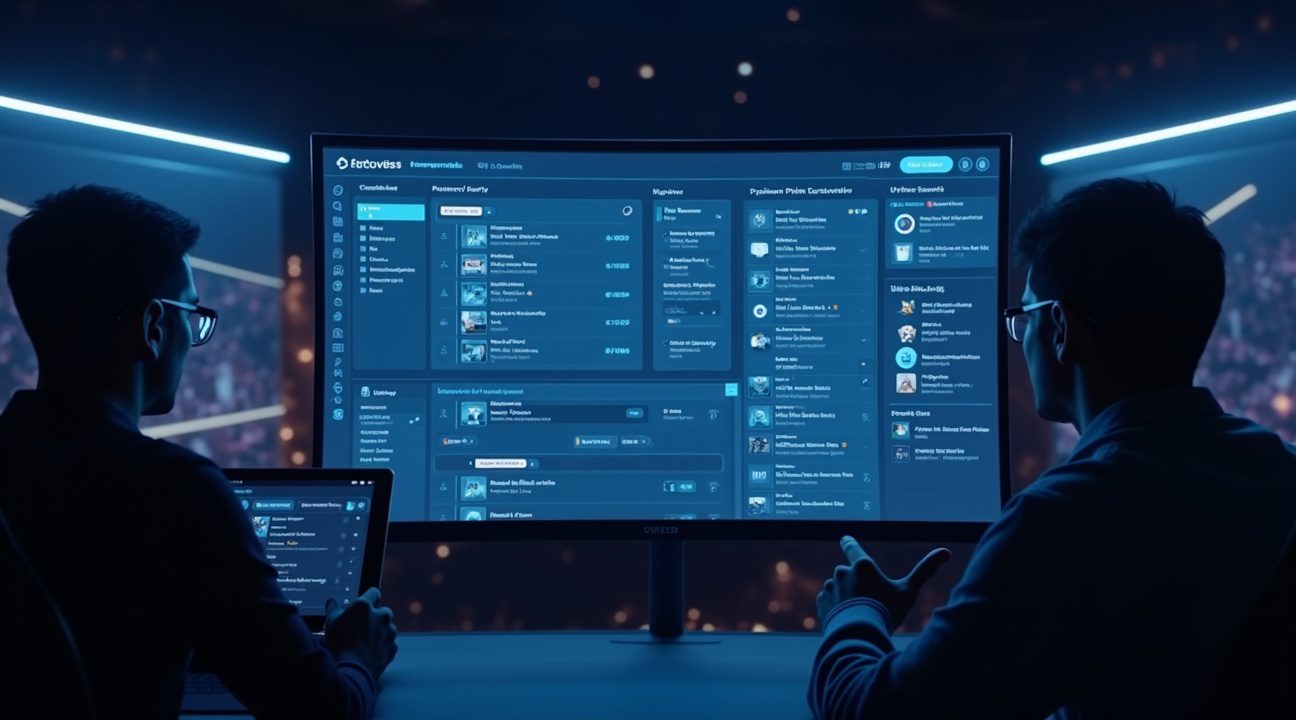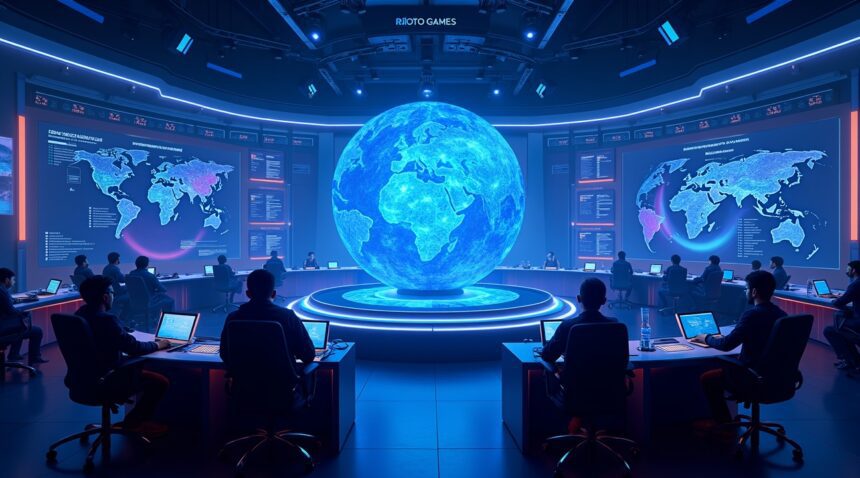Riot Games has unveiled a new Competitive Operations hub designed to serve as a centralized resource for all competitive integrity information related to League of Legends, VALORANT, and Teamfight Tactics.
Overview of the Competitive Operations Hub
This new platform significantly alters how professional players, teams, tournament organizers, and fans engage with key governance and regulatory materials. Previously scattered across various sources, this information is now accessible in one authoritative location.
Key Features and Advancements
- Centralized Information Hub – This unified platform offers all competitive regulations, governance documentation, and procedural updates for Riot’s esports titles. It supports robust search and filtering functions for easy navigation.
- Enhanced Anti-Match-Fixing Framework – The hub includes stronger safeguards against betting abuse via partnerships with entities such as Sportradar, GRID, and the International Betting Integrity Association to detect and address suspicious activity.
- Comprehensive Tournament Structure Documentation – Detailed explanations of qualification routes, formats, and competitive structures are provided for League of Legends, VALORANT, and Teamfight Tactics tournaments, including the VALORANT franchising system.
- Transparent Disciplinary Tracking System – A public-facing database tracks investigations, infringements, penalties, and appeals, enhancing transparency in enforcement actions across all titles.
- Real-Time Updates and User-Friendly Interface – The hub offers live schedules, news updates, and policy changes through a clean, intuitive interface tailored for use by fans, players, and organizations alike.
With this launch, Riot Games cements its commitment to competitive integrity, transparency, and community engagement across its growing portfolio of esports titles.
Riot’s New Centralized Hub Revolutionizes Esports Transparency and Integrity
Riot Games launched a comprehensive Competitive Operations hub on August 15, 2025, marking a significant milestone in professional esports governance. This centralized platform transforms how competitive integrity information flows through the League of Legends, VALORANT, and Teamfight Tactics ecosystems.
The hub serves as a unified resource center where professional players, teams, organizers, and fans can access critical information about competitive regulations and governance. Rather than searching across multiple platforms or waiting for scattered announcements, users now have immediate access to essential tools and up-to-date documentation that affects their competitive experience.
Establishing Trust Through Accessible Information
Creating a safe and trustworthy esports environment requires more than just regulations – it demands transparency that builds confidence among all stakeholders. The new hub addresses this need by consolidating previously scattered information into a single, authoritative source. Professional teams can now verify rule interpretations instantly, while fans gain unprecedented insight into how competitive decisions are made.
The platform’s emphasis on creating a regulated ecosystem reflects Riot’s understanding that modern esports structures require clear governance frameworks. This approach helps protect competitive integrity while ensuring all participants understand their rights and responsibilities within the system.
Advanced Search Capabilities Transform User Experience
The hub’s most practical feature lies in its sophisticated filtering and search functionality. Users can sort through extensive documentation using multiple criteria that match their specific needs:
- Game-specific filtering allows players to focus on League of Legends, VALORANT, or Teamfight Tactics regulations
- League-based sorting helps teams understand competition-specific rules and requirements
- Territory filters provide region-specific governance information for international competitions
- Document category organization separates player conduct guidelines from technical specifications
This granular approach ensures that a VALORANT team preparing for international competition can quickly locate relevant territorial regulations without sifting through unrelated League of Legends documentation. Similarly, content creators covering multiple competitive teams can efficiently research specific league requirements across different regions.
The searchable library eliminates the frustration of hunting through outdated forum posts or waiting for official clarifications. Teams can now verify eligibility requirements, understand penalty structures, and access appeal processes with unprecedented efficiency. This immediate access to authoritative information reduces disputes and creates a more professional competitive environment.
Riot’s commitment to long-term transparency extends beyond simple document storage. The hub represents a fundamental shift in how esports organizations communicate with their competitive communities. By providing centralized access to governance information, Riot acknowledges that competitive integrity depends on informed participation from all stakeholders.
The platform’s design recognizes that different users have varying information needs. Professional players require detailed rule interpretations, while fans might seek general understanding of competitive structures. Tournament organizers need comprehensive technical specifications, whereas teams focus on eligibility and conduct requirements. The hub’s flexible architecture accommodates these diverse needs without overwhelming any single user group.
Integration with existing competitive infrastructure ensures the hub remains current with ongoing tournaments and regulatory changes. This real-time updating capability means users can trust that accessed information reflects the most recent governance decisions. The system’s reliability becomes particularly crucial during major events where championship competitions demand precise rule adherence.
The launch establishes a new standard for esports transparency that competitors in the industry will likely need to match. By centralizing competitive operations information, Riot demonstrates that professional esports can achieve the same governance standards found in traditional sports leagues while maintaining the accessibility that makes competitive gaming unique.
This comprehensive approach to competitive transparency reinforces Riot’s position as an industry leader in esports governance. The hub’s success will likely influence how other game developers structure their competitive ecosystems, potentially driving industry-wide improvements in transparency and player protection.
https://www.youtube.com/riotgames
Comprehensive Documentation Library Streamlines Access to Critical Resources
The new Competitive Operations hub transforms how esports professionals access vital regulatory information through its extensive documentation library. This centralized repository consolidates regulations and guidelines from all Riot-managed competitive titles into a single, user-friendly platform.
Essential Resources Available at Your Fingertips
The library houses comprehensive materials that competitive teams and organizers need to stay compliant and informed:
- Esports Global Code of Conduct governing professional behavior standards
- Game-specific rules covering mechanics, procedures, and competition formats
- Roster construction guidelines detailing player eligibility and transfer requirements
- Dispute resolution forms for addressing competitive conflicts and violations
- Official rulings documenting past decisions and precedent-setting cases
- Procedural updates announcing changes to tournament operations
- News articles explaining regulatory modifications and their impact
Advanced filtering capabilities allow users to quickly locate relevant information by game title and regional context. This targeted approach proves particularly valuable for organizations managing teams across multiple leagues or franchising systems, where requirements can vary significantly between titles and territories.
The platform’s search functionality eliminates the frustration of hunting through scattered documents across different websites. Instead of bookmarking dozens of individual resources, esports professionals can access everything through one portal. This streamlined approach reduces the risk of overlooking critical updates that could affect competitive standing or eligibility.
Regular content updates ensure the library remains current with the rapidly evolving competitive landscape. When new partnerships or initiatives change existing protocols, the documentation reflects these modifications immediately. Teams no longer need to wonder whether they’re referencing outdated information.
The hub particularly benefits tournament organizers who previously struggled to locate specific procedural requirements. Whether they’re running local events or managing diverse team compositions, organizers can quickly verify compliance standards and operational procedures.
This comprehensive approach extends beyond simple document storage. The library integrates contextual information that helps users understand not just what rules exist, but why they matter and how they apply to specific situations. Such depth proves invaluable for newcomers to competitive gaming who need guidance on complex regulatory frameworks.

Anti-Match-Fixing Framework and Betting Abuse Prevention Take Center Stage
I find Riot Games’ comprehensive approach to competitive integrity particularly impressive in their new hub design. The platform centralizes all policies and procedures related to anti-match-fixing efforts and betting abuse prevention, creating a unified system that streamlines oversight across all competitive titles. This strategic consolidation represents a significant step forward in maintaining fair play standards across Valorant franchising and other esports competitions.
Multi-Pronged Strategy for Competitive Integrity
The framework operates through four core pillars that work together to protect competitive integrity:
- Prevention forms the foundation, focusing on identifying potential vulnerabilities before they can be exploited.
- Education ensures that players, staff, and stakeholders understand both the rules and the consequences of violations.
- Enforcement provides clear pathways for addressing infractions when they occur.
- Transparency maintains public trust by offering visibility into investigation processes and outcomes.
I appreciate how this systematic approach addresses the growing sophistication of betting-related threats in professional gaming. The hub’s design allows for real-time monitoring and rapid response to suspicious activities, which has become essential as esports betting markets continue expanding globally.
Strategic Partnerships Enhance Monitoring Capabilities
Riot’s collaboration with industry-leading partners significantly strengthens their monitoring infrastructure:
- Sportradar brings extensive experience in sports betting integrity.
- GRID provides advanced data analytics capabilities.
- The International Betting Integrity Association (IBIA) contributes regulatory expertise and cross-industry intelligence sharing.
These partnerships enable continuous surveillance of betting patterns across multiple platforms and jurisdictions. The combined expertise helps identify unusual betting activity that might indicate match-fixing attempts or other forms of competitive manipulation. I see this collaborative approach as particularly valuable given the global nature of esports competitions and the diverse regulatory environments they operate within.
The centralized platform also facilitates faster information sharing between internal teams and external partners. This improved coordination allows for more effective investigations and helps prevent the spread of integrity threats across different competitions. By maintaining detailed records and providing clear audit trails, the system supports both internal accountability and external regulatory compliance.
The transparency component deserves special attention, as it addresses growing demands from fans, sponsors, and regulatory bodies for greater visibility into integrity protection measures. Regular reporting and public communication about investigation outcomes help build confidence in competitive fairness while deterring potential bad actors who might otherwise exploit perceived weaknesses in oversight systems.
Tournament Structure Clarity Across League of Legends, VALORANT, and Teamfight Tactics
Riot Games’ new Competitive Operations hub delivers comprehensive breakdowns of tournament structures across their major esports titles, eliminating confusion about qualification paths and competitive formats. I find this centralized resource particularly valuable for teams and fans who previously had to piece together information from multiple sources.
Comprehensive Tournament Breakdowns by Title
The hub provides detailed information for each major competitive game in Riot’s portfolio:
- League of Legends features complete regional league breakdowns, qualification paths to major events, and comprehensive coverage of premier tournaments including the Mid-Season Invitational (MSI) and the World Championship (Worlds).
- VALORANT‘s complex franchising system receives clear stage-by-stage explanations, detailing progression pathways through regional competitions to international championships.
- Teamfight Tactics formats receive equal attention, with detailed outlines of events like the Golden Spatula regional finals and their progression systems within the competitive ecosystem.
These accessible diagrams and explanations transform what was once scattered information into digestible formats. Teams can now quickly reference qualification requirements, while fans gain deeper understanding of how their favorite players reach major tournaments.
The clarity extends beyond basic tournament structures. Each game’s section includes timing breakdowns, prize pool distributions, and regional variations that impact competitive play. For League of Legends specifically, the hub clarifies how regional strength affects international seeding, making the path from local competition to World Championship events more transparent.
VALORANT‘s section proves especially helpful given the recent franchise model changes. I appreciate how the hub breaks down the relationship between regional leagues and international events, clarifying qualification mechanics that previously required extensive research to understand fully.
The Teamfight Tactics coverage addresses a gap that existed for auto-battler enthusiasts. Regional finals pathways, seasonal structures, and championship qualification now receive the same detailed treatment as Riot’s flagship titles.
This standardized approach across all games creates consistency in how competitive information is presented. Teams planning their competitive calendars can reference one location for scheduling conflicts, qualification deadlines, and tournament structures. The visual elements complement written explanations, making complex tournament trees easier to follow for newcomers while providing sufficient detail for experienced competitors.

Disciplinary Tracking System Brings Unprecedented Accountability
The new Competitive Operations platform establishes an unprecedented level of transparency through its comprehensive disciplinary tracking system. I’ve examined how this system fundamentally changes the way competitive violations are documented and made accessible to the community.
This tracking system meticulously logs every investigation outcome, violation type, penalty imposed, and the specific regulation that was breached. Players, teams, and organizations can now access detailed records of disciplinary actions across all Riot-managed titles through a centralized database. The system maintains historical data that allows users to examine patterns in enforcement and understand how different violations are consistently addressed.
Enhanced Visibility Through the Rulings Section
The rulings section serves as the cornerstone of this transparency initiative, providing complete documentation of official disciplinary actions. I can access information about competitive integrity violations, unsportsmanlike conduct penalties, and technical infractions with unprecedented detail. The section includes:
- Investigation timelines and methodologies used
- Evidence summaries that led to specific conclusions
- Penalty rationales that explain the severity of sanctions
- Appeals processes and their outcomes
- Regulatory citations that justify each disciplinary action
This comprehensive approach ensures that stakeholders understand not just what happened, but why specific decisions were made. The platform eliminates guesswork about enforcement standards and creates a reliable reference point for future cases.
The system’s design allows users to filter results by game title, violation type, time period, and penalty severity. Teams can analyze trends in their competitive scenes, while individual players can better understand the boundaries of acceptable behavior. This data accessibility proves particularly valuable for franchised organizations that need to maintain compliance standards across multiple competitive levels.
Riot’s implementation goes beyond simple record-keeping by establishing clear connections between violations and their consequences. Each entry includes the specific regulation violated, creating a direct link between rules and enforcement. This approach helps players and organizations understand which behaviors trigger investigations and what penalties they might face.
The tracking system also documents the appeals process comprehensively. Users can see how often penalties are reduced, upheld, or overturned through the appeals system. This transparency builds confidence in due process and demonstrates that Riot’s disciplinary system includes appropriate checks and balances.
I’ve observed that this level of documentation creates accountability not just for players and teams, but for Riot itself. The company’s enforcement decisions are now subject to public scrutiny, which naturally encourages consistent application of rules across different situations and competitive levels.
The platform’s impact extends to emerging competitive teams that can study historical cases to understand expectations better. New organizations entering Riot’s competitive ecosystem can review past violations to develop stronger compliance programs and avoid common pitfalls.
Furthermore, the system supports data-driven policy improvements. Riot can analyze violation patterns to identify areas where rules need clarification or where educational initiatives might prevent future infractions. This feedback loop strengthens the entire competitive ecosystem by addressing systemic issues before they become widespread problems.
The disciplinary tracking system represents a significant shift from traditional esports governance models. Instead of operating behind closed doors, Riot now provides stakeholders with the information they need to understand and participate in the competitive ecosystem responsibly. This transparency builds trust between the developer, players, teams, and the broader community.
I believe this system will influence how other game developers approach competitive governance. The comprehensive documentation and public accessibility set new standards for accountability in esports. The platform demonstrates that transparency and fair competition aren’t mutually exclusive but rather complementary elements of a healthy competitive environment.
The tracking system’s influence on competitive behavior will likely become apparent over time as players and organizations adjust their practices based on clearly documented enforcement patterns. This creates a more predictable competitive environment where success depends on skill and strategy rather than uncertainty about rule interpretation.

Modern Interface Design Enhances User Experience for All Stakeholders
Riot Games has crafted their new Competitive Operations hub with a sleek, contemporary interface that accommodates everyone from professional esports organizations to casual fans following their favorite teams. The platform removes traditional barriers that often make competitive information difficult to access, creating an environment where users can quickly find what they need without technical expertise.
Advanced Search and Filter Capabilities
The hub’s search functionality represents a significant leap forward in how users interact with competitive information. I can navigate through complex rule sets, enforcement updates, and scheduling information using intuitive filters that narrow results based on specific games, regions, or tournament types. These features particularly benefit teams and organizations managing multiple competitive commitments, as they can quickly isolate relevant information without scrolling through unrelated content.
Key search capabilities include:
- Game-specific filtering for titles like Valorant franchising and League of Legends competitive scenes
- Regional tournament filtering for localized competitive updates
- Rule category sorting for quick access to specific procedural information
- Timeline-based filtering for historical and upcoming competitive events
Real-Time Updates and Community Engagement
The platform delivers live match schedules and breaking news directly to users’ dashboards, ensuring that competitive developments reach stakeholders immediately. This real-time approach proves essential for teams planning strategies around upcoming matches or tournament organizers coordinating multiple events simultaneously.
Riot’s commitment to transparency shines through their direct publication of procedural changes and enforcement decisions on the platform. Rather than relying on third-party sources or delayed communications, users receive official information straight from the source. This approach builds trust within the competitive community while ensuring accurate information distribution.
The hub also fosters community engagement by providing spaces for feedback on proposed rule changes and competitive formats. Teams can voice concerns about specific procedures, while fans gain insight into how competitive decisions affect their viewing experience. Regular updates keep the platform fresh and responsive to community needs, making it a living resource that evolves with the competitive scene.
Tournament organizers particularly benefit from the streamlined communication channels, as they can coordinate with various teams and receive official guidance on rule interpretations without navigating multiple communication platforms. The interface design prioritizes clarity and efficiency, reducing the administrative burden that often accompanies competitive operations management.

Sources:
EsportsRadar: “Riot Games unveils centralised Competitive Operations hub”
Esports Insider: “Riot Games launches Competitive Operations website”
Official Riot Games Competitive Operations site: “Competitive Operations – Riot Esports – Riot Games”


